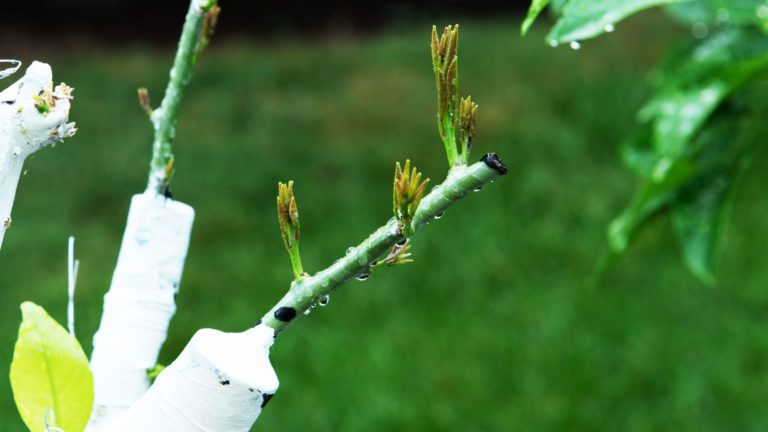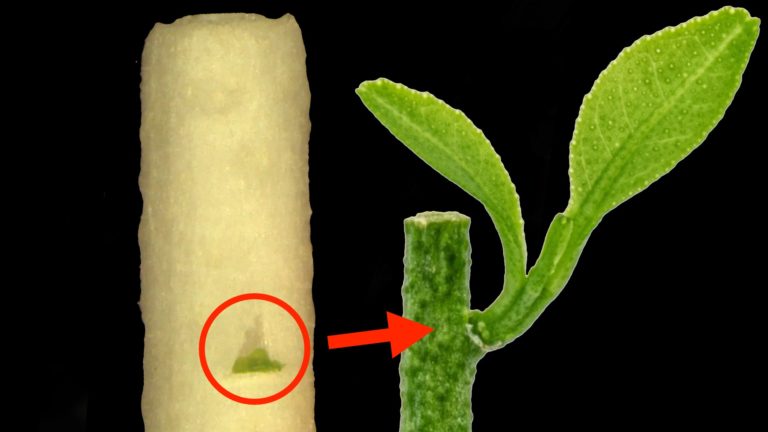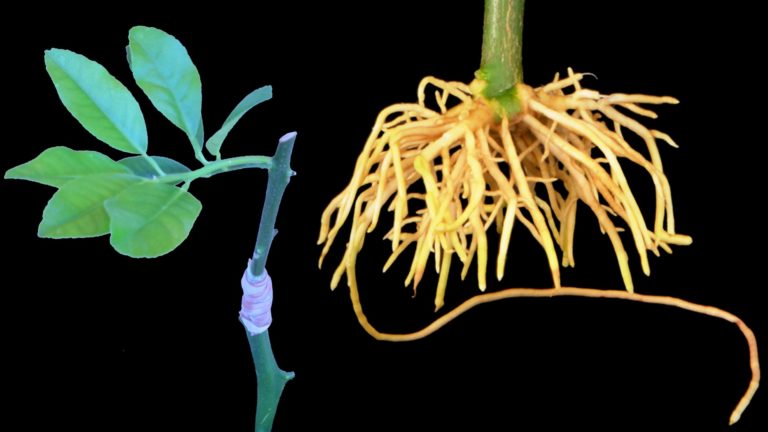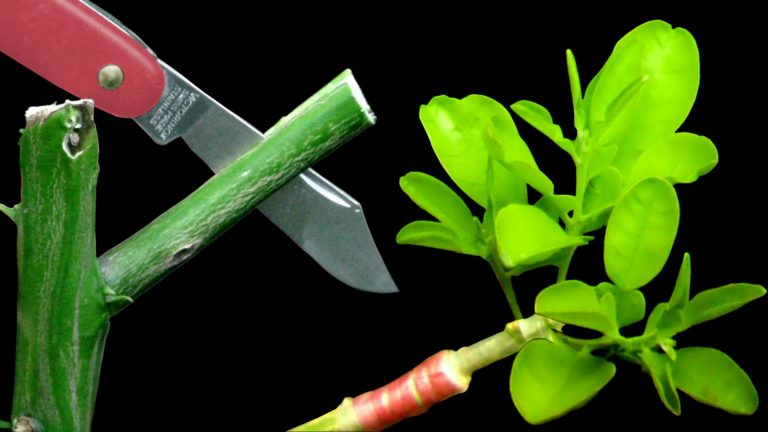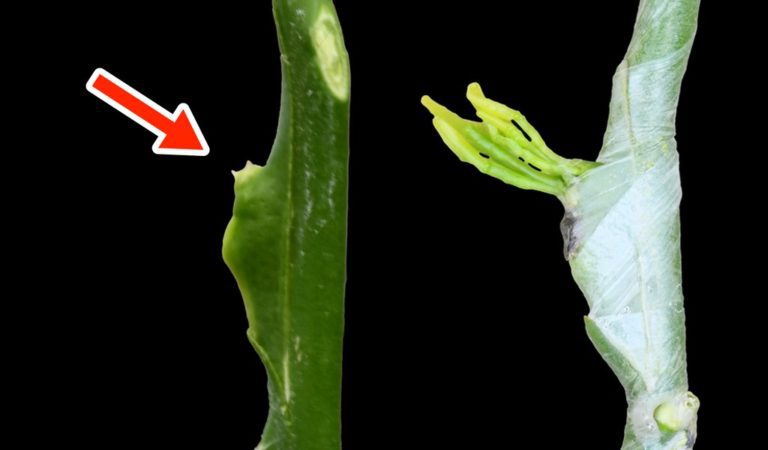Growing Citrus Trees from Seed – Fruit to Seedling
This article shows the process of growing citrus trees from seed from harvesting the fruit and extracting the seeds all the way to germination.
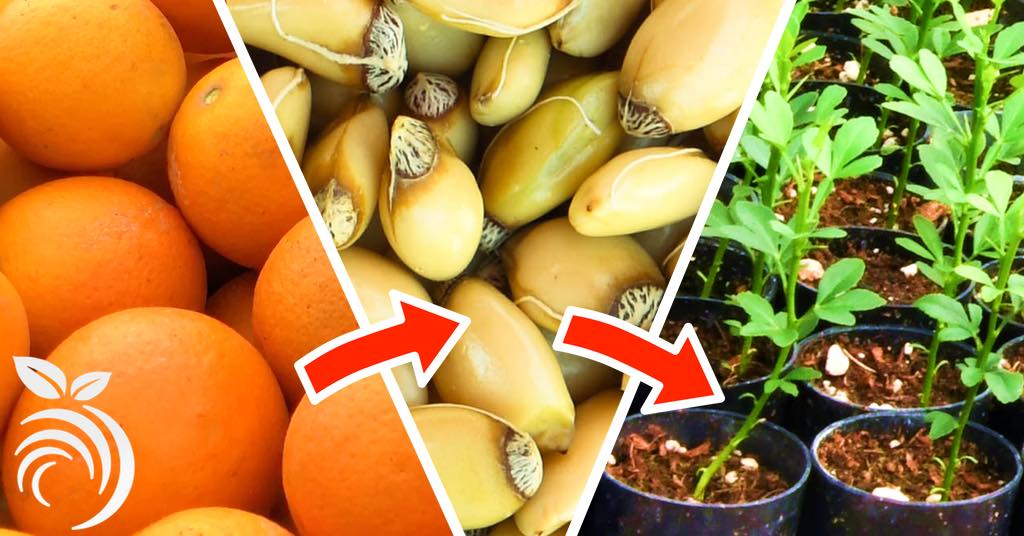
I have long wanted to write this article due to countless publications incorrectly teaching that to grow an orange tree or lemon tree from seed, a seed from the desired variety should be germinated. The typical method used by citrus nurseries to grow a citrus tree is to first germinate a citrus rootstock seed and then graft a bud of the desired variety to the resulting seedling. I thank TreeSource Citrus Nursery in California’s central valley for allowing me to see their process and share it with you in this article.
Growing Citrus Trees from Seed – from Harvesting Fruit to Germination – YouTube Video
In addition to this article, I have made a YouTube video showing growing citrus trees from seed.
Citrus nurseries in California start their rootstock seedlings with seeds from the fruit of mature rootstock trees that are registered with the California Department of Food and Agriculture. These are special trees in that they are periodically tested to ensure that they are free of pathogens that cause citrus diseases. The pathogen that causes HLB, the deadliest known citrus disease, is not transmitted via seeds. Some other citrus pathogens are seed transmitted, however, so testing is important.
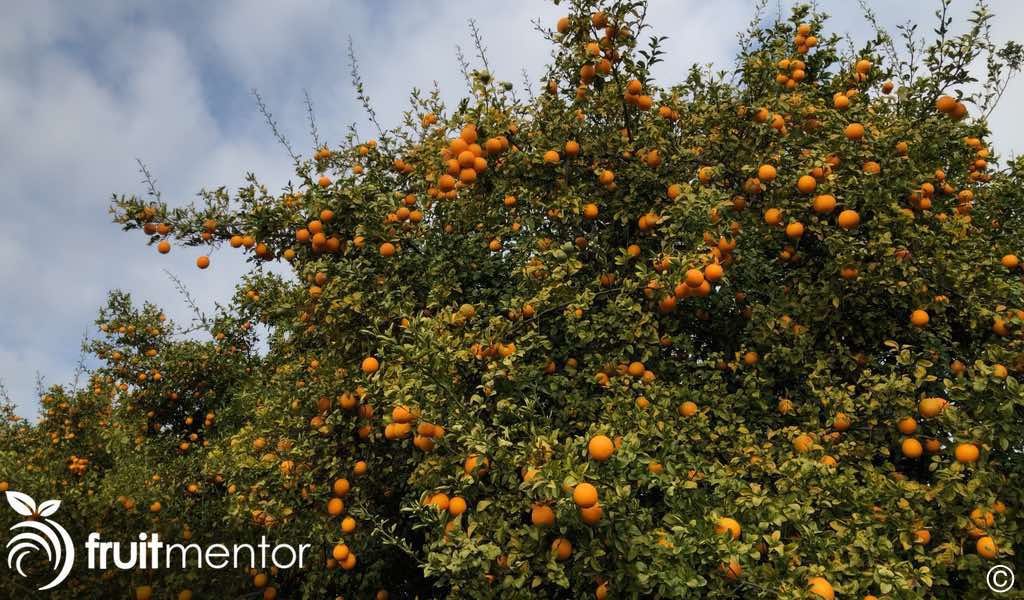
The seeds come from special varieties of citrus and citrus hybrids called rootstocks. There are many rootstock varieties. The typical rootstock fruit tastes terrible, but that is not important because the fruit to be eaten comes from the scion, the fruit-producing citrus variety that is grafted to the rootstock. The right rootstock can give a citrus tree resistance to disease, poor soils, or frost. Also, certain rootstocks can make the fruit of the grafted variety more flavorful than others.
Harvesting the Rootstock Fruit
The rootstock fruit is harvested by grabbing tree branches with a hook and shaking them.
Fruit is then raked up and put in a crate. The fruit is harvested when it is ripe and ready for the seeds to be extracted.
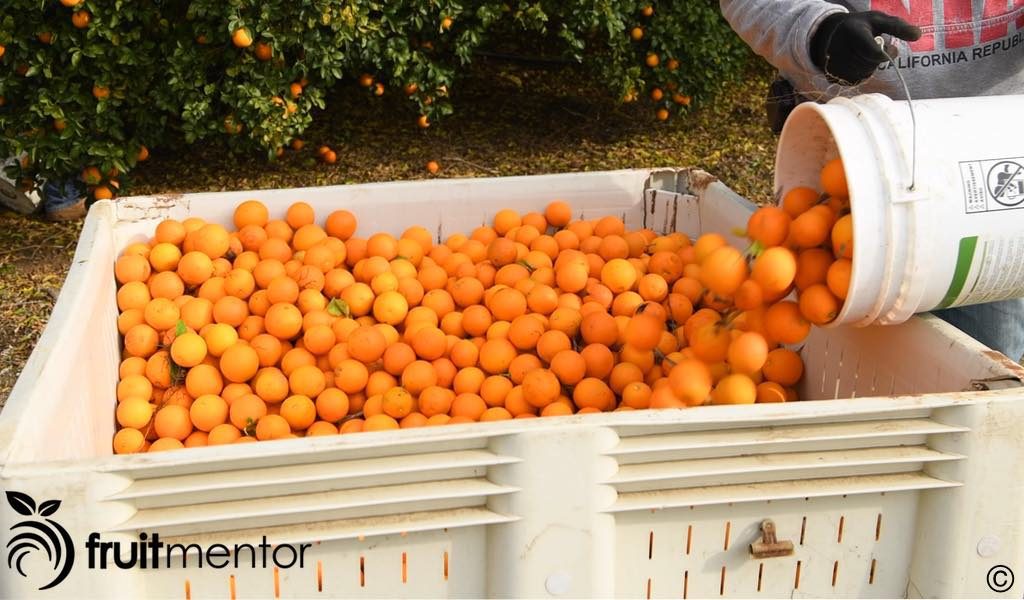
Extracting Rootstock Seeds from the Fruit
The fruit is run through an extractor machine to separate the seeds from the fruit.
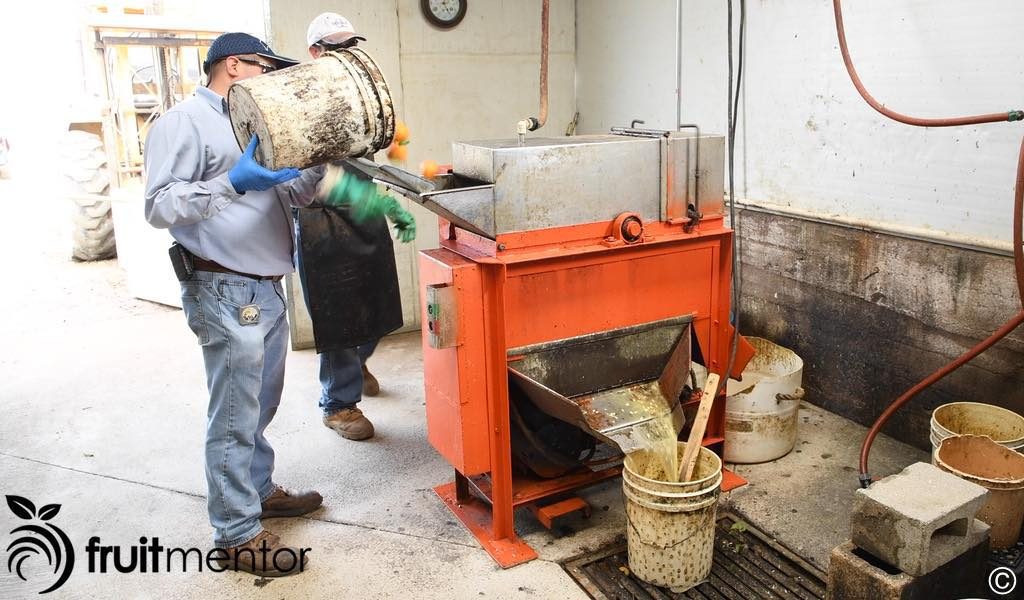
Seeds exit the machine via one chute. The rest of the fruit exits the machine via another chute.
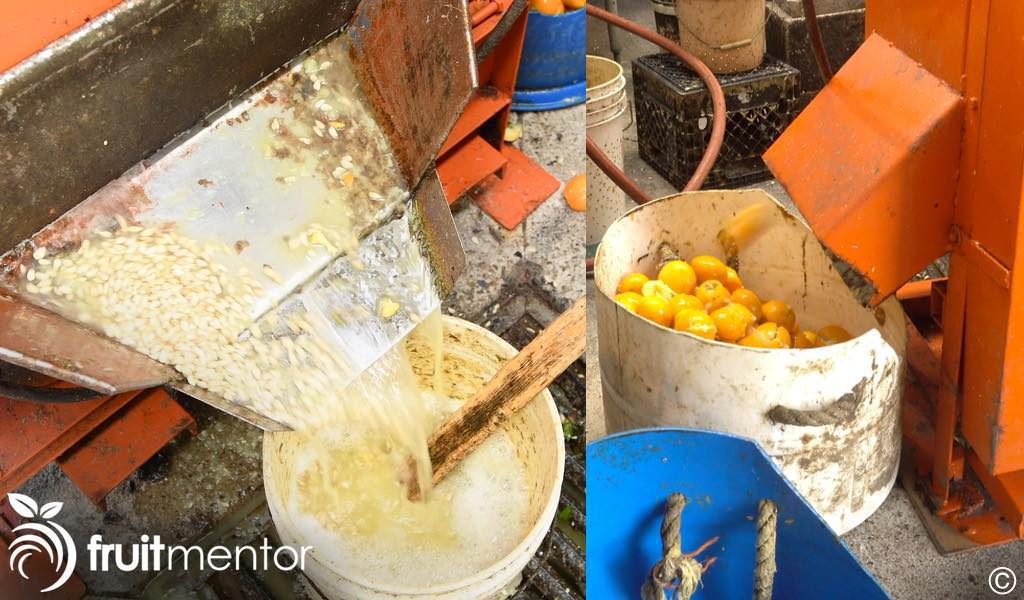
The fruit is sent through the extractor multiple times to extract more seeds.

Rinsing the Citrus Rootstock Seeds
The seeds from the extractor are rinsed with water. During this process, floating seeds are discarded as they will not germinate. Only the sinkers are kept.
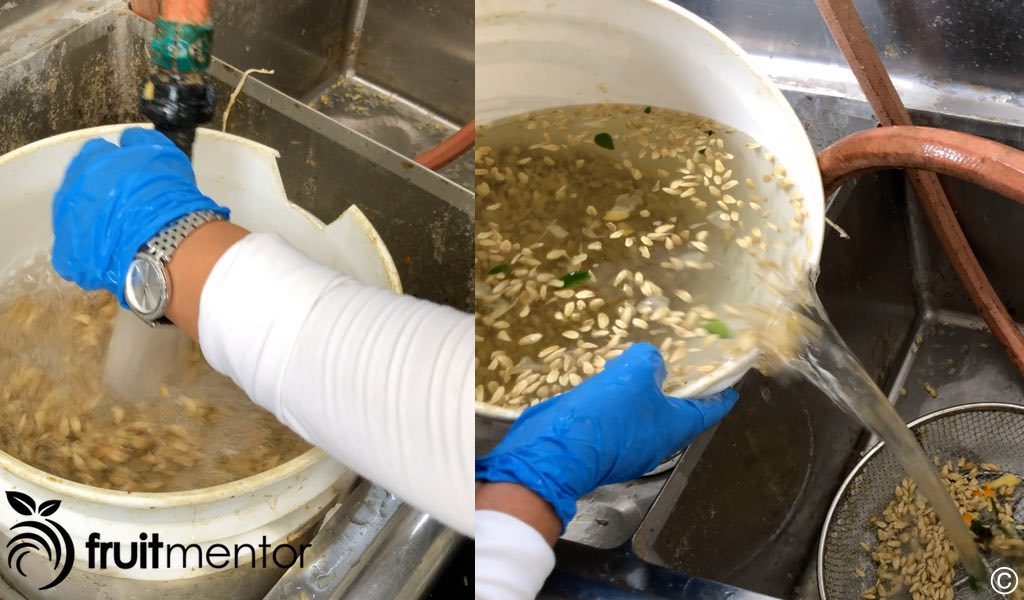
The seeds at this point are slimy and acidic.
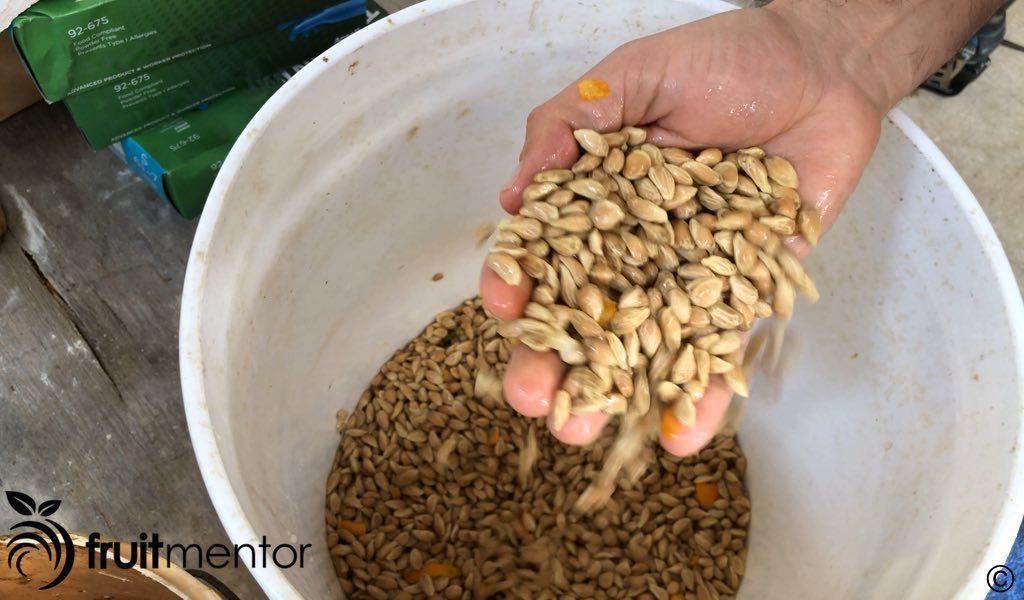
Eliminating the Slime
To eliminate the slime and lower the acidity, the seeds are stirred into a mixture of water and lime and then rinsed.

Heat Treatment and Fungicide Application
Next the seeds go through a heat treatment to eliminate some pathogens. The seeds are soaked for ten minutes in water mixed to achieve a temperature of 52 degrees Celsius. After the heat treatment the seeds are treated with a fungicide to keep them mold-free.
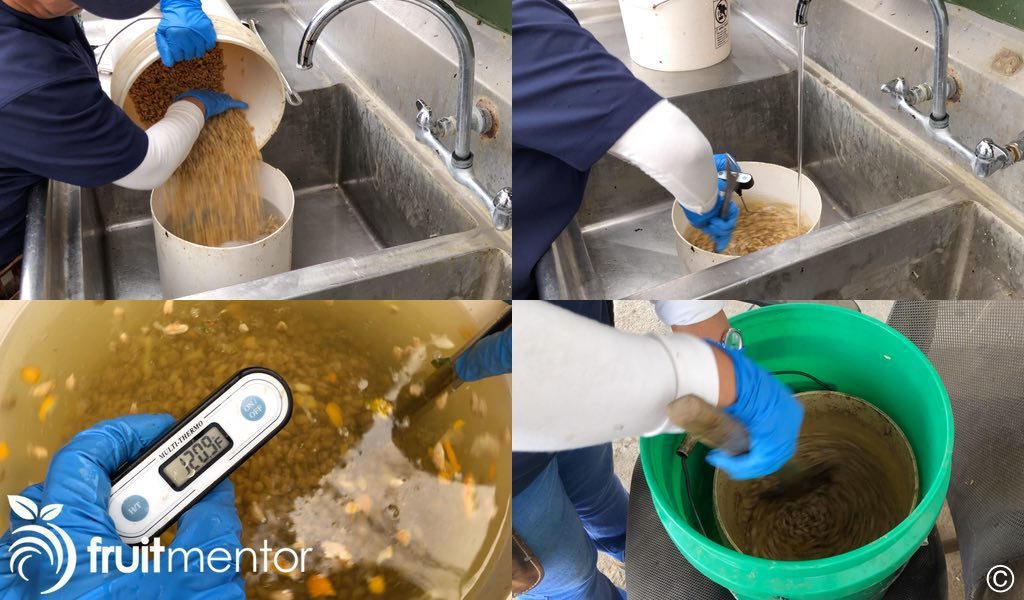
Drying the Citrus Rootstock Seeds
Next the seeds are spread out to dry in the mild Autumn sunshine typical of California’s central valley. When the seeds are dry, they are collected and taken to the seed sorter.
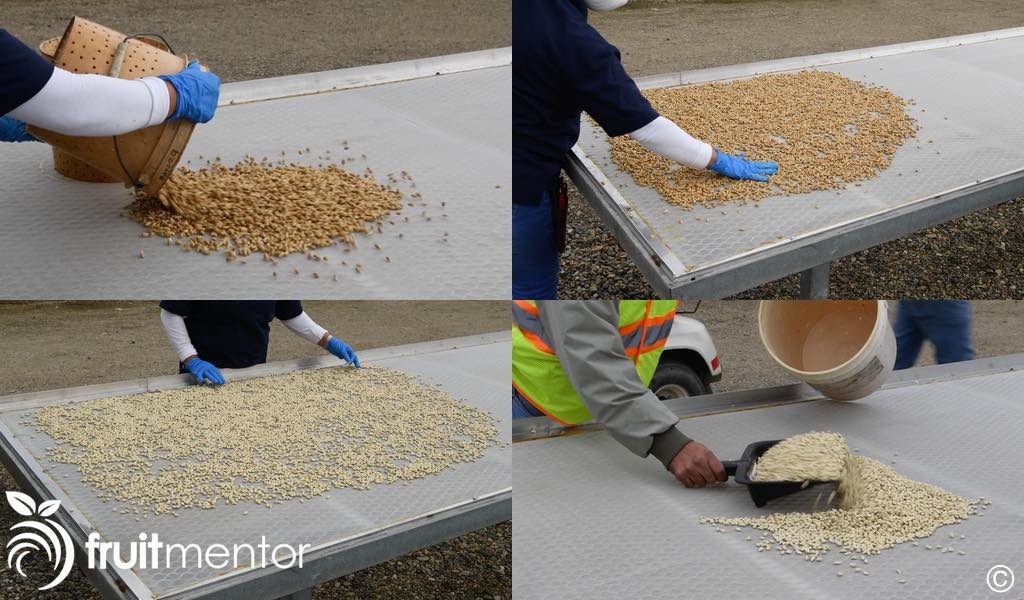
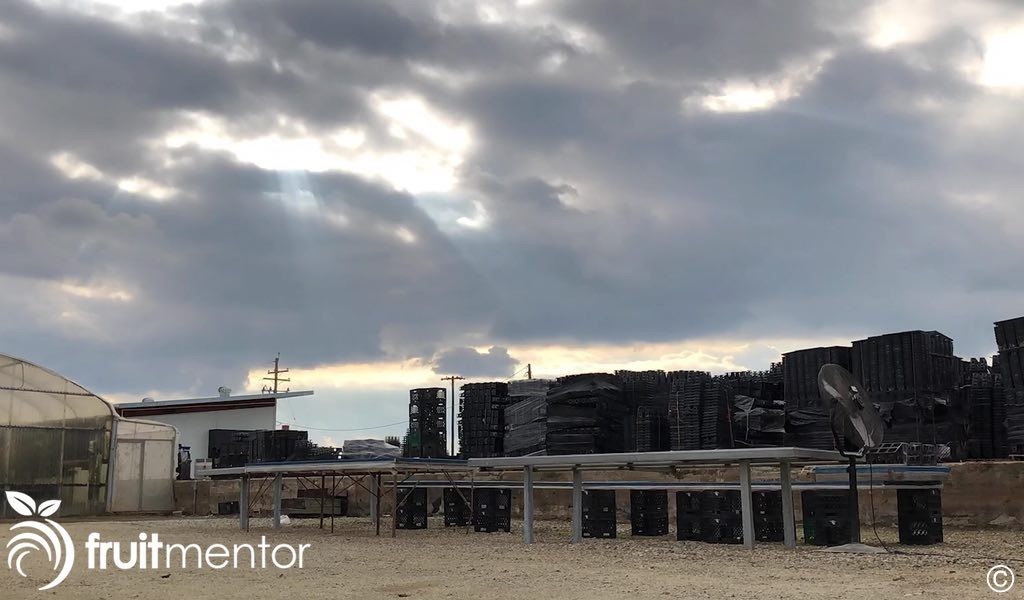
Sorting and Storing the Rootstock Seeds
The seeds are sorted into multiple sizes and then packaged.
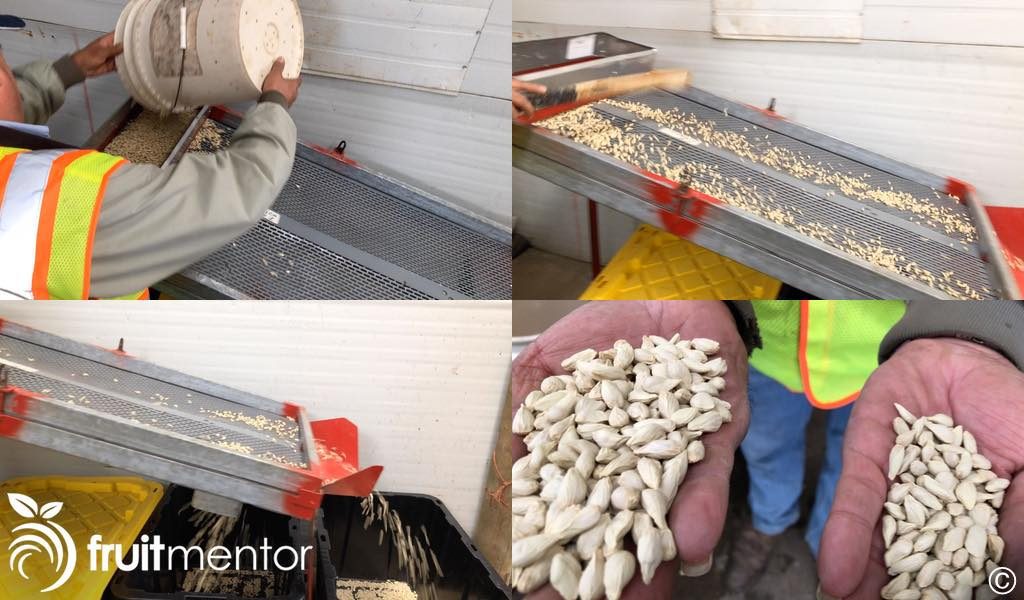
Seeds that are not germinated right away are placed in cold storage and used throughout the year.
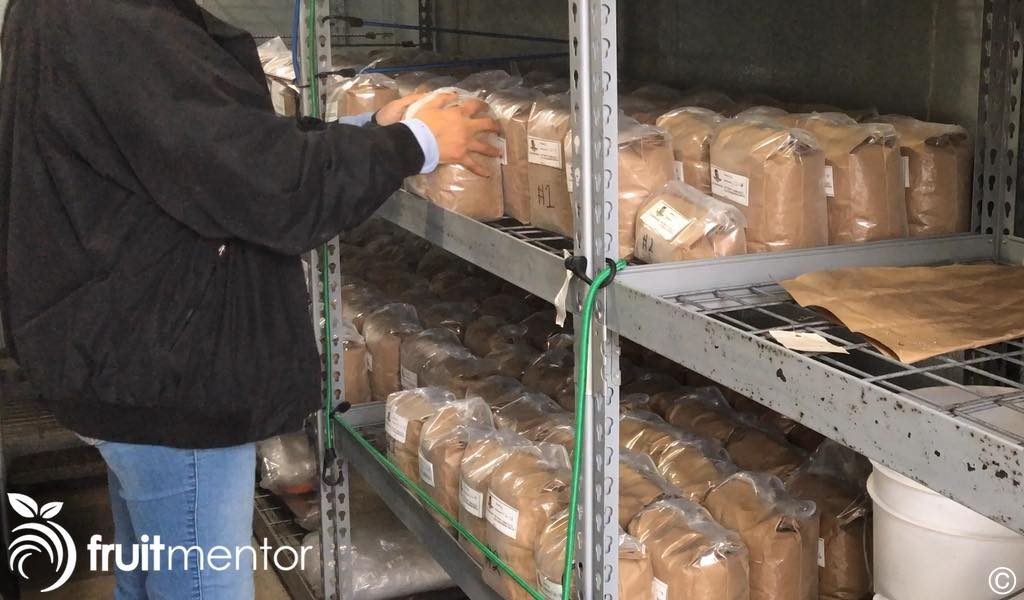
When it is time to plant the seeds, the seeds are peeled. Peeled citrus seeds germinate much faster than unpeeled citrus seeds and the seedlings from peeled seeds have straighter, healthier roots.
Peeling the Rootstock Seeds
First the seeds are chemically treated to soften the seed coat. Then vermiculite is used to rub the seed coats off of the seeds.
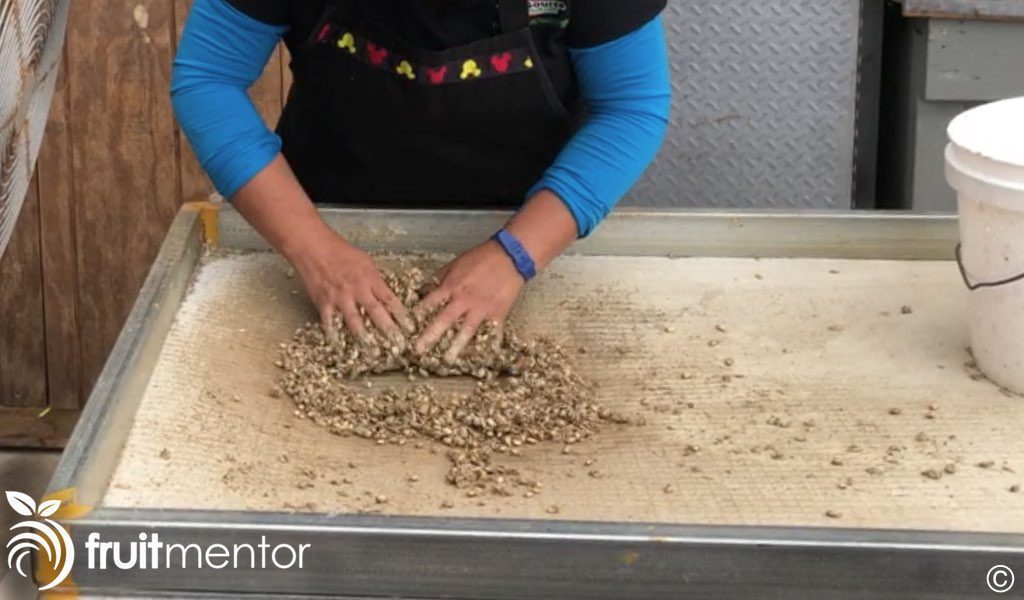
A fan is used to separate the seeds from the seed coats, which are blown away.
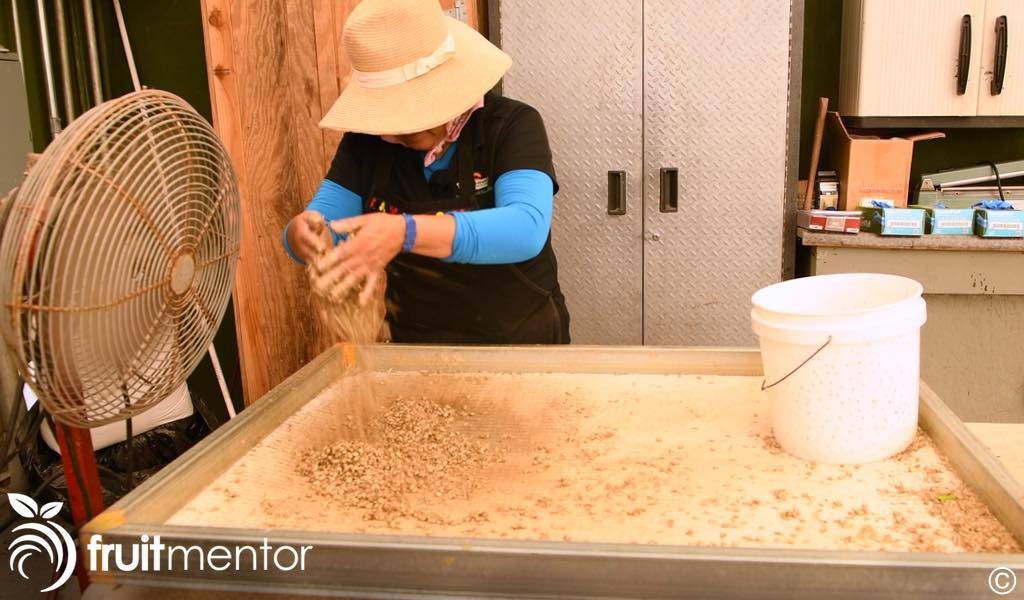
Preparing the Pots
To get ready for the seeds, pots are filled with a growth medium that is then watered.
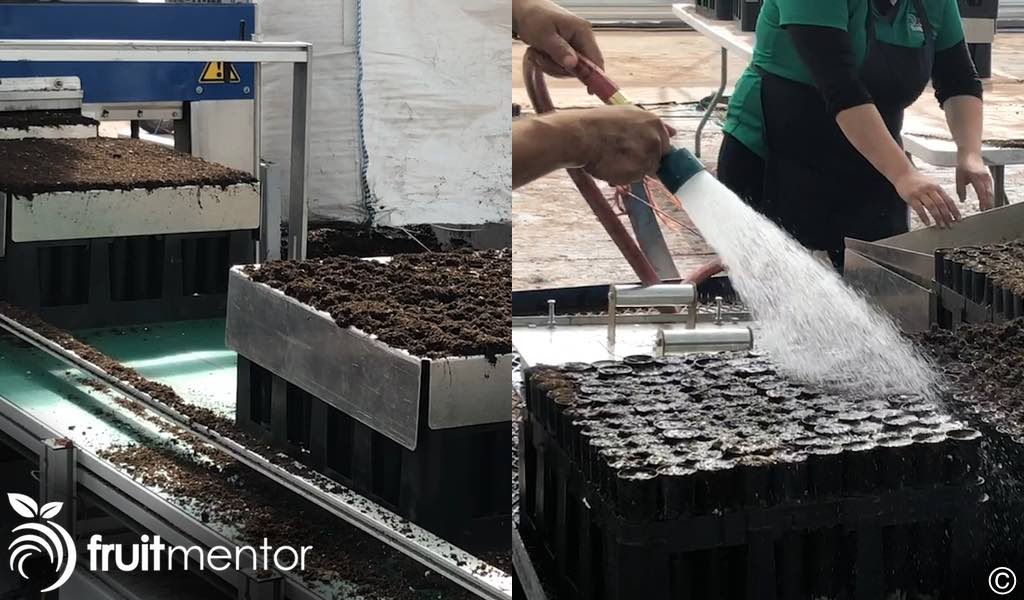
Protecting Citrus Rootstock Seedlings from Insect Pests
To protect them from insects that spread citrus diseases, the seedlings are grown inside an insect proof greenhouse.
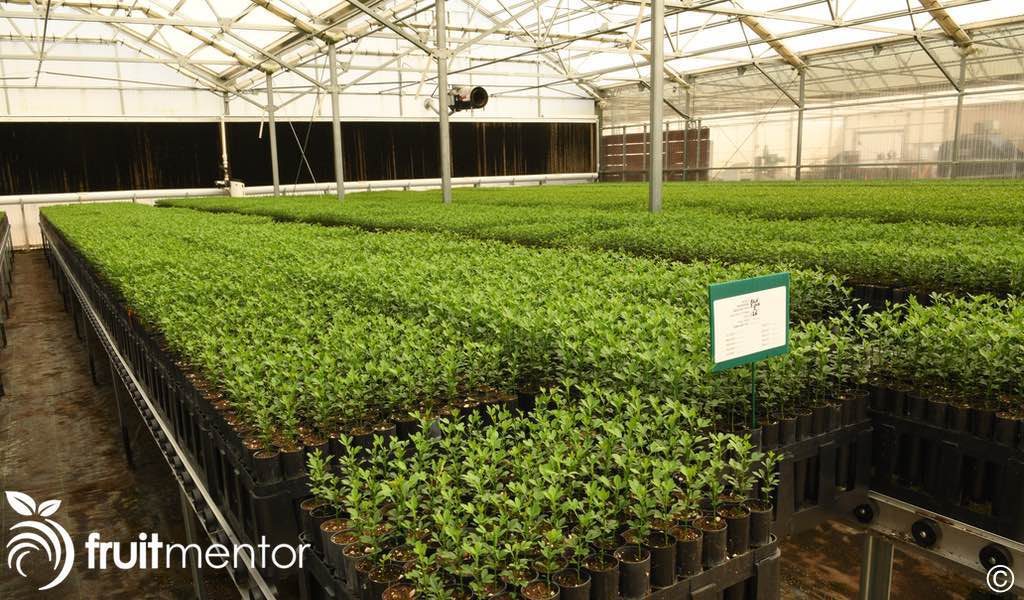
When employees enter or leave the greenhouse, insects are excluded by a double-doored vestibule in which only one door may be open at a time.
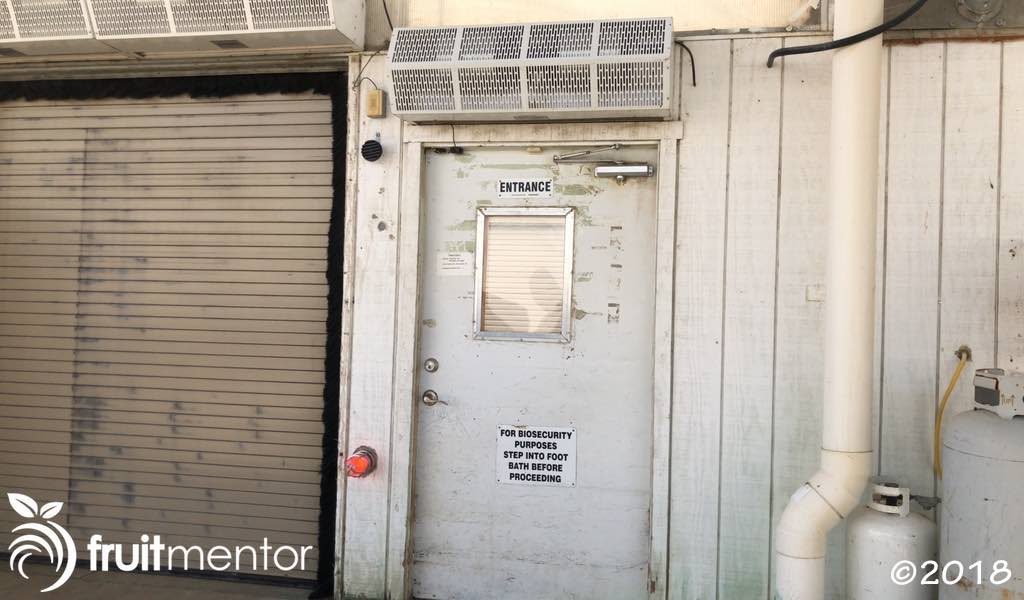
A fan is triggered to blow insects out of the structure whenever the outside door is opened.
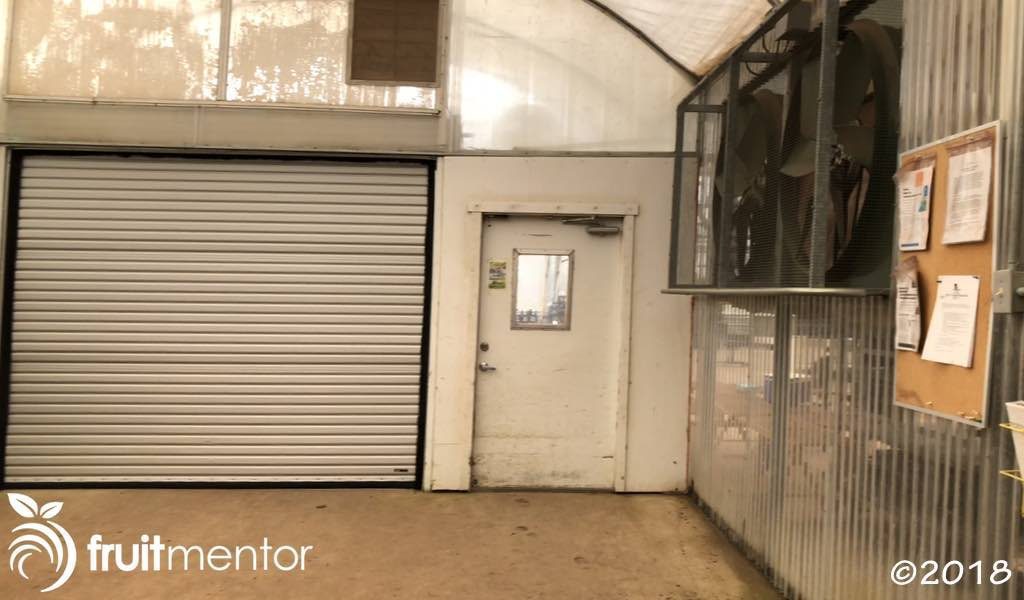
Planting the Citrus Rootstock Seeds
Even in cold storage the viability of citrus seeds declines with time. Later in the season when the viability of the seeds is lower, seeds are planted two per pot.

Having been peeled, the rootstock seeds begin to germinate quickly.
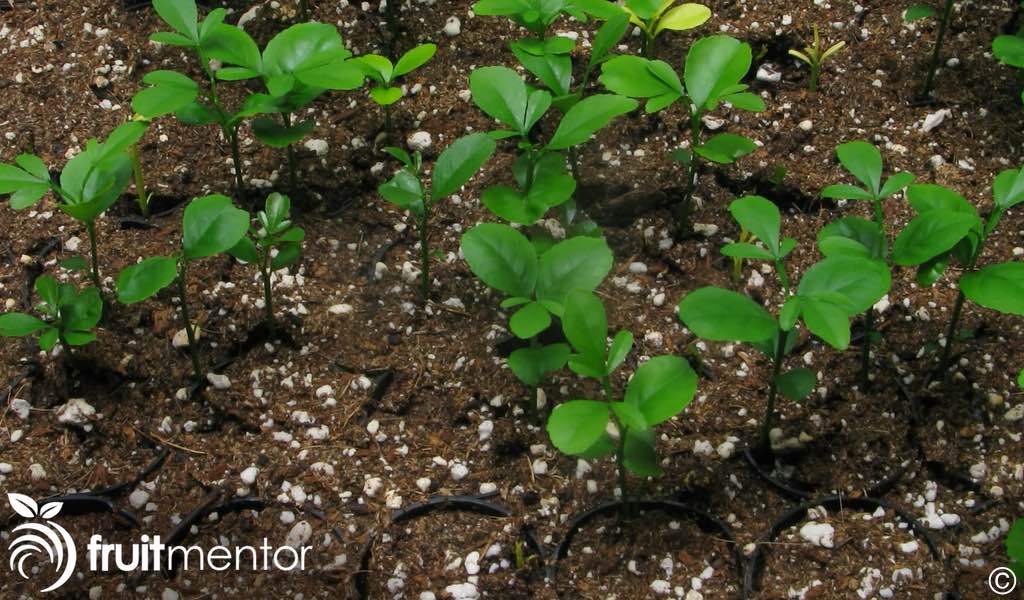
Sorting the Citrus Rootstock Seedlings
Unlike most nursery plants, individual citrus rootstock seedlings grow at different rates and must be sorted two times in the growing cycle of four to six months.
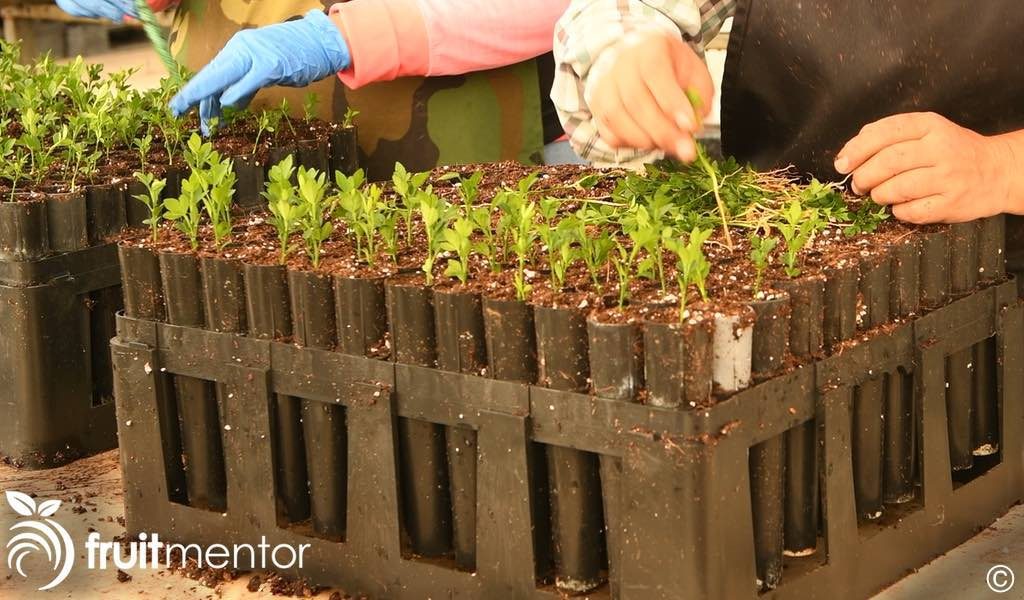
Bud Grafting the Rootstock Seedlings
When the seedlings are of sufficient size, they are budded with the desired scion variety. Click here to read my article on how the citrus rootstock seedlings are budded.

Buying Citrus Trees from Reputable Nurseries is Critical
Huanglongbing is the deadliest known citrus disease. It spreads much more readily than other citrus diseases via Asian citrus psyllids and by movement of citrus budwood and citrus trees. When buying a citrus tree, you can avoid introducing huanglongbing and other citrus diseases into your yard by buying your tree from a reputable nursery.
Acknowledgement
I thank TreeSource Citrus Nursery for allowing me to view their process of growing citrus rootstock seedlings from seed and share it with you.
Resources for Californians
Please visit CaliforniaCitrusThreat.org for more information on how to stop the spread of deadly citrus disease.
California Law Regarding Citrus Propagation
In California, the collection of any citrus propagative materials, including budwood and seeds, from non-registered sources is illegal. Any citrus trees grown or grafted in California must come from source trees registered with either:
- The Citrus Nursery Stock Pest Cleanliness Program, administered by the California Department of Food and Agriculture, or
- The Citrus Clonal Protection Program, located at the University of California at Riverside.
Funding
This article was funded by a grant from California’s Citrus Research Board.

